You should configure priority alerts on your Garmin watch to transform it into a personalized health and performance coach that keeps you safe and goal-focused. Access alert settings by holding the middle-left button and guiding to “Notifications & Alerts,” then customize heart rate zones, workout thresholds, hydration reminders, and emergency contacts. These tailored notifications prevent health risks, optimize training intensity, and guarantee you stay on track with fitness objectives while avoiding information overload through strategic customization that adapts to your specific needs.
Understanding Priority Alerts on Garmin Watches
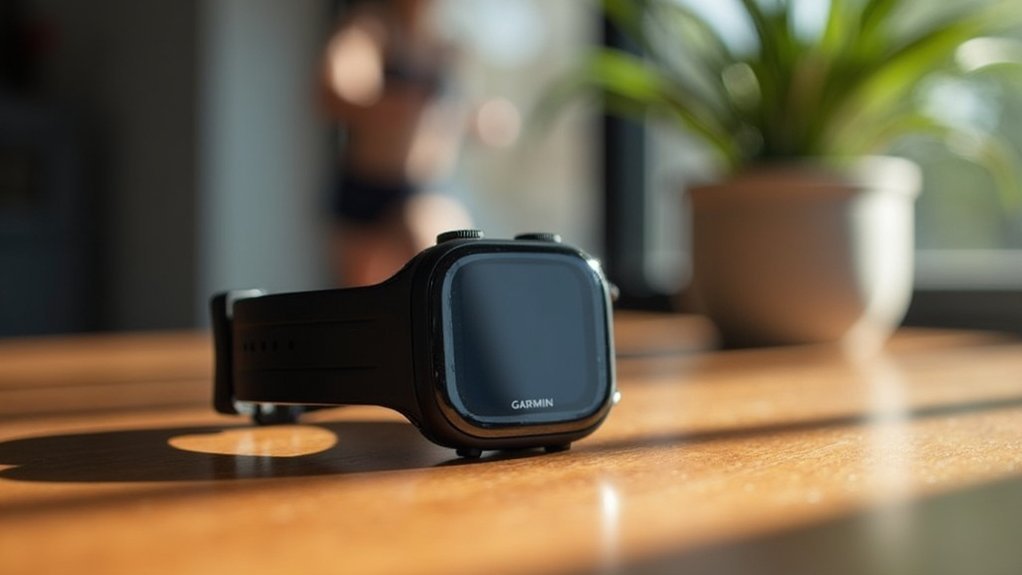
Priority alerts on Garmin watches transform how you receive notifications during activities and daily use.
These customizable features let you tailor which notifications appear based on your specific needs, whether you’re focusing on workouts or daily tasks.
Customize your Garmin notifications to match your priorities, filtering alerts for workouts or daily activities based on your specific needs.
You can prioritize different alert types including activity notifications, health and wellness reminders, and goal-tracking updates.
Move alerts, stress notifications, and rest reminders support your overall well-being, while goal alerts help track daily steps and weekly intensity minutes.
This personalization guarantees you’ll receive critical information promptly without scrolling through less important messages.
By filtering notifications strategically, you’ll maintain better focus during activities while staying informed about what matters most.
Priority alerts fundamentally create a streamlined notification system that aligns with your lifestyle and fitness objectives.
Training alerts can be configured as recurring alerts to notify you at regular intervals, helping maintain consistent pacing and performance throughout your workout sessions.
Step-by-Step Guide to Accessing Alert Settings
To access your Garmin watch’s alert settings, you’ll start directly from the watch interface using a simple button combination. Press and hold the middle-left button from your watch face to open the main menu.
Look for “Watch Settings” or a similarly labeled option, which may vary depending on your specific model.
Once you’re in the settings menu, navigate to “Notifications & Alerts.” Here you’ll find extensive categories including Smart Notifications, Health & Wellness, and System Alerts. This is where you’ll customize specific alerts like phone connection notifications, storm warnings, and daily summaries.
For additional customization options, you can also use the Garmin Connect app on your smartphone. Open the app, go to “More,” then “Settings,” and select “Notifications” to sync preferences with your watch. Within the notifications menu, you can select App Notifications to enable, disable, or customize individual app alerts that will appear on your Garmin device.
Configuring Heart Rate and Performance Alerts

Once you’ve accessed your notification settings, heart rate and performance alerts become your most essential training companions.
These alerts transform your Garmin watch into a proactive health and fitness coach that monitors your crucial metrics in real-time.
Here’s what you can configure:
- Heart Rate Zone Alerts – Set notifications when you enter or exit specific zones like fat burn, aerobic, or maximum effort ranges.
- Abnormal Heart Rate Monitoring – Configure alerts for unusually high or low heart rates outside of workouts through Health & Wellness settings. These alerts activate after 10 minutes of inactivity when no movement is detected.
- Performance Metric Alerts – Establish thresholds for cadence, pace, or distance to maintain consistent training intensity.
- Custom Range Notifications – Define personalized heart rate ranges based on your fitness goals and receive vibration or beep alerts.
Setting Up Custom Workout Notifications
While heart rate zones provide excellent baseline monitoring, custom workout notifications take your training precision to the next level by delivering targeted alerts specific to each activity you’re performing.
Custom workout notifications deliver targeted alerts that elevate your training precision beyond basic heart rate monitoring.
You can create these custom workouts using the Garmin Express online app, setting specific alerts for different training phases like warm-up or sprint intervals.
When you start a workout, these custom alerts take precedence over your regular watch alerts, ensuring you’re not distracted by non-workout notifications like “drink” or “eat” reminders.
You’ll need to manually adjust alert settings for each workout type—whether it’s low aerobic or anaerobic training—but this customization lets you focus on performance metrics that matter most for each session. Always remember to save changes after configuring your alert settings to ensure they activate properly during your workouts.
Managing Hydration and Nutrition Reminders
Beyond workout-specific alerts, your Garmin watch can help you maintain peak performance throughout the day by managing hydration and nutrition reminders that keep your body fueled and ready for any training session.
You’ll find extensive tracking features through widgets and glances that let you monitor fluid intake and set personalized daily goals. The system integrates seamlessly with Garmin Connect, where you can customize container sizes, units of measure, and reminder intervals. These features promote awareness of daily water consumption habits while supporting athletic performance and recovery.
Here’s how to maximize your hydration and nutrition tracking:
- Set Dynamic Goals – Enable auto-increase goals that adjust your hydration targets after recording physical activities
- Customize Alert Timing – Configure reminders at specific intervals or times that match your daily routine
- Log Intake Directly – Select containers and amounts right from your watch for accurate tracking
- Analyze Patterns – Review data in Garmin Connect to identify improvement areas and maintain consistency
Optimizing Safety and Health Monitoring Alerts
You’ll want to configure heart rate monitoring alerts that warn you when you’re pushing beyond safe exercise zones or when irregular patterns occur.
Setting up emergency alerts becomes critical for solo activities, allowing your watch to automatically detect incidents and notify emergency contacts when you can’t respond.
These health-focused alerts work together to prevent serious medical events by catching warning signs before they escalate into dangerous situations. Remember that alerts are specific to each activity type, so you’ll need to configure these safety settings separately for running, cycling, swimming, and other activities you engage in.
Heart Rate Monitoring
Heart rate monitoring serves as your most critical health safeguard when configuring priority alerts on Garmin watches.
You’ll track your real-time pulse using optical sensors while setting customized thresholds that warn you when you exceed safe limits or drop below target zones. These alerts optimize your workout safety by preventing overexertion and potential cardiovascular incidents. Ensuring your notification settings are properly configured prevents missed heart rate alerts that could compromise your safety during intense training sessions.
Here’s how heart rate alerts enhance your training:
- Set activity-specific limits – Configure different thresholds for running, cycling, and swimming based on each activity’s demands.
- Define custom ranges – Establish upper limits above 100 bpm and lower limits below 60 bpm for personalized monitoring.
- Enable goal-based notifications – Receive prompts when entering or exiting target heart rate zones during workouts.
- Access long-term analysis – Review stored heart rate trends to detect abnormal patterns and overtraining indicators.
Emergency Alert Setup
When emergencies strike during outdoor activities, your Garmin watch becomes a lifeline that can automatically detect incidents and send critical alerts to your designated contacts. You’ll need to configure up to three emergency contacts in the Garmin Connect app before enabling alerts. Each contact can have multiple phone numbers and email addresses for maximum reach.
| Setup Component | Requirement |
|---|---|
| Emergency Contacts | Up to 3 contacts in Garmin Connect app |
| Phone Connection | Smartphone with data plan and network coverage |
| Contact Communication | Ability to receive texts and emails |
| Device Battery | Above 20% for reliable alert triggering |
Your watch activates alerts by pressing and holding the primary button, displaying a countdown screen you can cancel if needed. The system automatically detects incidents during outdoor walks, runs, and bike activities, sending your name and GPS location to all contacts. For enhanced accuracy, enable precise location settings in your smartphone’s Garmin Connect app permissions to ensure your emergency contacts receive the most accurate GPS coordinates possible.
Health Risk Prevention
Beyond emergency response capabilities, your Garmin watch serves as a proactive health guardian that can detect potential medical issues before they become serious problems.
You’ll receive real-time alerts for irregular heart rhythms, abnormal blood oxygen levels, and concerning heart rate patterns that could indicate underlying health conditions. These customizable notifications enable you to seek medical attention before minor issues escalate into emergencies. Ensure your phone’s operating system is up to date to maintain reliable communication between your device and smartphone for consistent health alert delivery.
Here are four essential health risk prevention alerts you should configure:
- Heart Rate Monitoring – Set alerts for dangerously high or low heart rates during rest and activity.
- Blood Oxygen Alerts – Monitor oxygen saturation levels to detect respiratory concerns early.
- Stress Level Warnings – Receive notifications when prolonged stress could impact your cardiovascular health.
- Hydration Reminders – Prevent dehydration-related complications during extended activities.
Troubleshooting Common Alert Configuration Issues
Although Garmin watches offer robust notification capabilities, you’ll occasionally encounter issues where priority alerts don’t function as expected.
Start by confirming Bluetooth is enabled on both devices and check that the Garmin Connect app has notification permissions. Turn off “Do Not Disturb” mode and review iOS Focus settings that might block notifications. Set message previews to “always” for reliable delivery.
If notifications still aren’t working, verify your Bluetooth connection stability and check app-specific notification settings on your smartphone.
Enable smart notifications in Garmin Connect for desired apps and confirm vibration and sound alerts are activated. Settings may vary significantly between different watch models, so always refer to your owner’s manual for model-specific configuration instructions.
When problems persist, restart both devices, update software, or reset your watch settings. These troubleshooting steps resolve most alert configuration issues effectively.
Best Practices for Maximizing Alert Effectiveness
After resolving configuration issues, you’ll want to optimize your alert settings to create a notification system that truly enhances your activities without becoming a distraction.
Here are four best practices for maximizing alert effectiveness:
- Review and update alerts regularly – Your training goals change, so should your alerts. Monthly reviews guarantee notifications remain relevant to your current objectives.
- Balance alert frequency carefully – Too many alerts create fatigue; too few miss critical information. Find the sweet spot that keeps you informed without overwhelming.
- Customize alerts by activity type – Running alerts differ from cycling needs. Tailor notifications for each sport to receive context-specific information. Consider environmental factors like air pressure changes that can vary significantly between different geographical locations and weather conditions.
- Test alerts in real conditions – Practice runs reveal whether your settings work effectively during actual workouts, allowing refinements before important training sessions.
Frequently Asked Questions
Can Priority Alerts Drain My Garmin Watch Battery Faster Than Normal?
Yes, priority alerts can drain your Garmin watch battery faster. They require background monitoring, increase notification frequency, and use audible/vibration features simultaneously. You’ll notice higher power consumption with frequent alerts enabled.
Do Priority Alerts Work When My Watch Is in Water Lock Mode?
Yes, priority alerts work in water lock mode if you’ve configured them as audio or vibration notifications. However, alerts requiring touchscreen interaction won’t function since the touchscreen’s disabled during water activities.
Can I Set Different Alert Tones for Different Types of Notifications?
You can’t set different alert tones for various notification types on Garmin watches. All phone notifications use the same uniform tone, regardless of whether they’re calls, texts, or app alerts.
Will Priority Alerts Still Function if My Phone Is Out of Range?
Priority alerts won’t function if your phone’s out of range unless you’ve connected your watch to another Bluetooth device that can forward notifications, like a compatible smart device or hub.
How Many Custom Priority Alerts Can I Set up Simultaneously?
You can set up a limited number of custom priority alerts simultaneously on your Garmin watch. The exact limit varies by device model, but it’s typically restricted to prevent overwhelming you during activities.

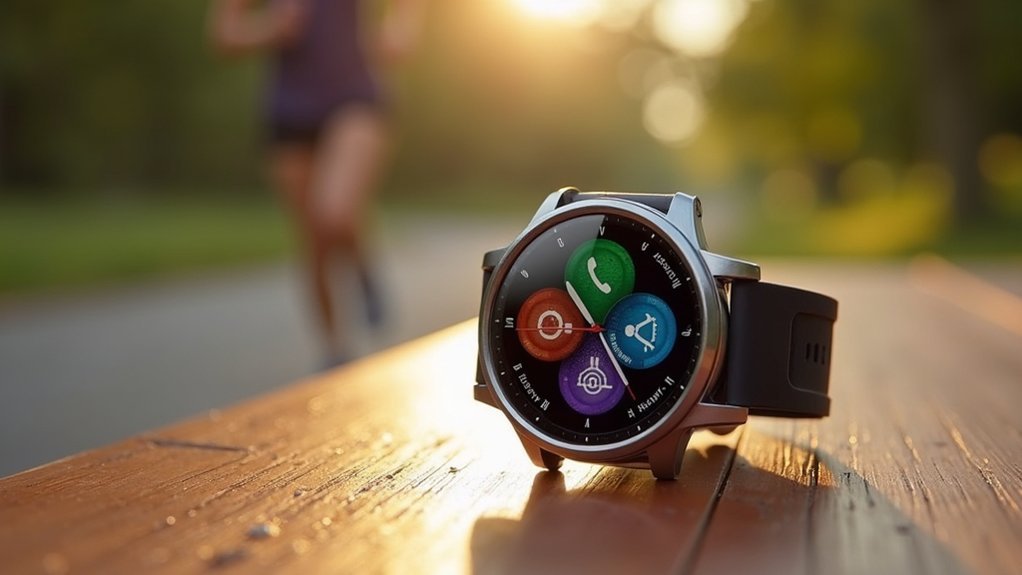
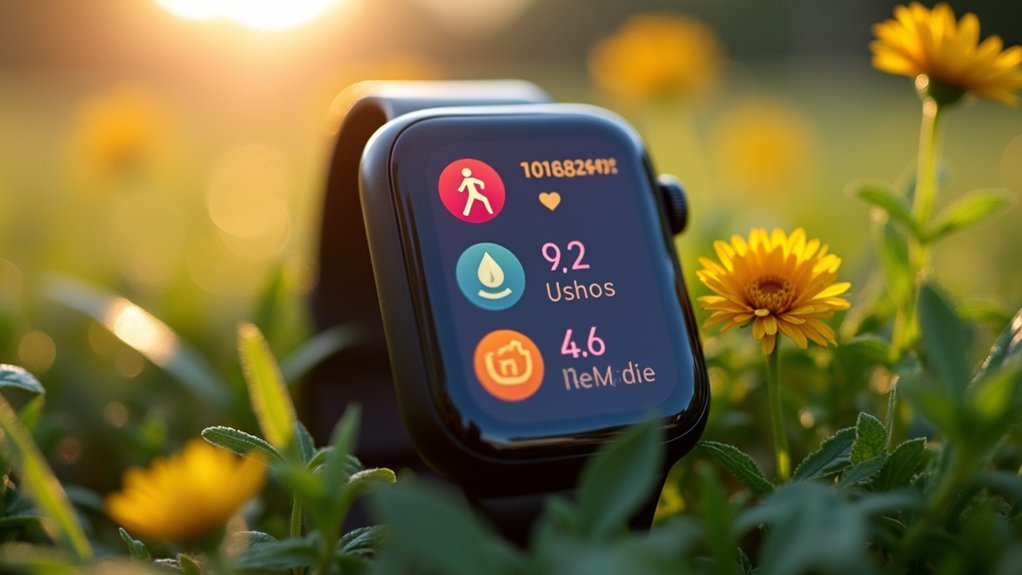
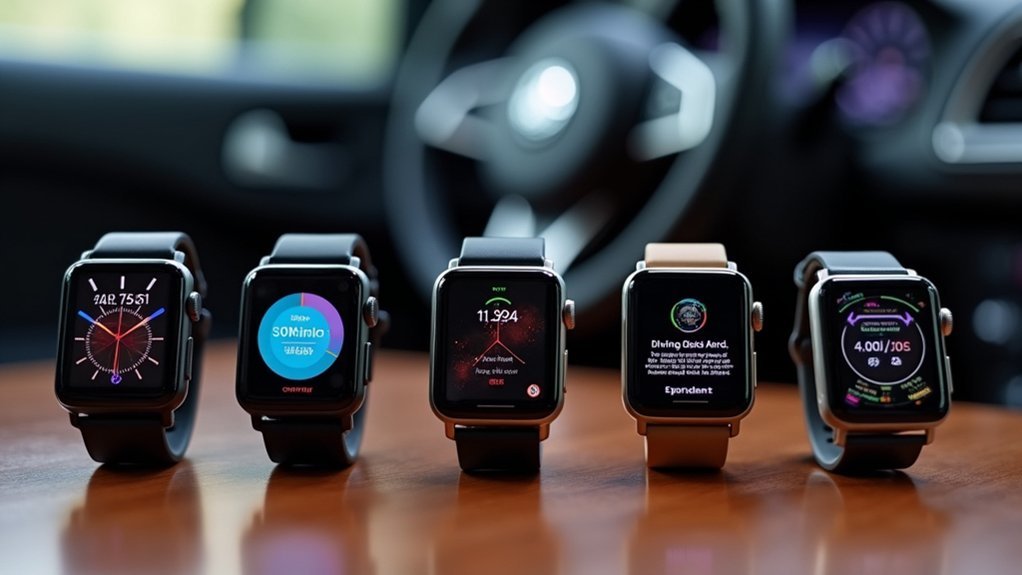
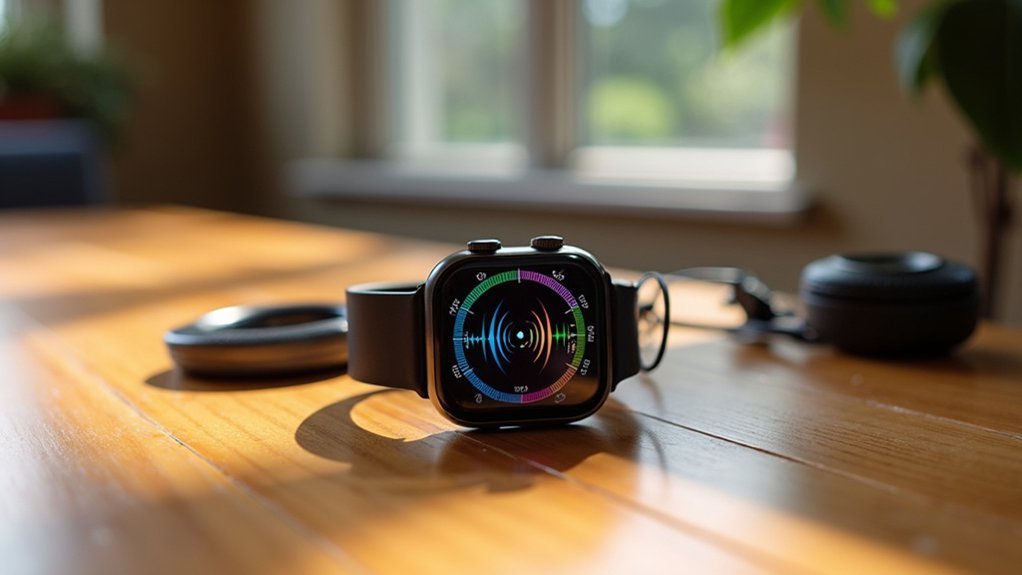
Leave a Reply